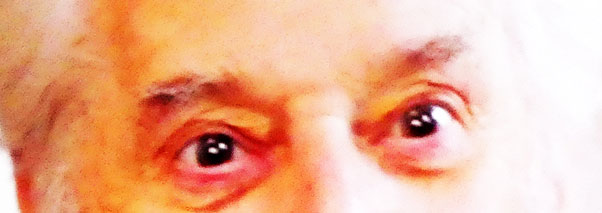
Alan Dearling suggests that as a ‘pre-script’ as opposed to a post-script’: “Embarking on, and fulfilling this personal journey into the World of Jodorowsky, has, almost by definition, required my own life to become obsessional. It has involved much scary, mind-altering stuff. Has it been good for my own mental health? Would I recommend it for others? Read on. Make up your own minds.”
The films of Jodorowsky are unique, marginally bonkers, but also situated within an historical sequence of art-movements. They occupy a space and place which was birthed in earlier times, during the post-World War One era. Spawned by the political upheavals, times when artists, playwrights, film-makers and other creators saw themselves at the vanguard of the freedom-fighters, rallying the masses against censorship, and totalitarian regimes of both Fascist and Communist persuasions. But perhaps they were also quite incestuous, working within their own rarified ‘bubbles’. These artists issued manifestoes and exhibited their ‘works’ as part of ‘happenings’. Frequently in the name of ‘freedom’: Liberté, égalité, fraternité.
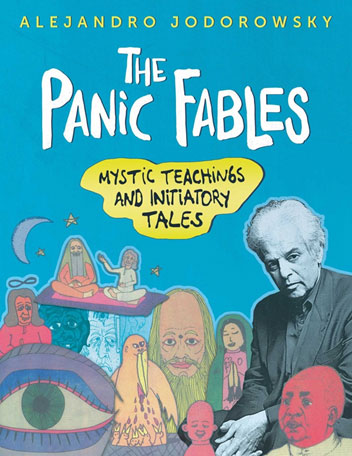
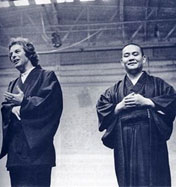
Alejandro Jodorowsky was born in Chile in 1929, but developed his creativity in Mexico, France and Spain through writing and illustrating comics, involvement in theatre and film-making. He came to the fore as an international artist late in the 1960s. His background in mime, as a puppeteer and avant-garde actor and writer, are all part of the early ‘mix’. His work is alternately, surreal, violent, spiritual, perverse and always challenging. Also, it is packed full of parables, Zen mysticism and a strange mix of the personal, religious and out-of-body mind games… To watch them requires an act of subjugation, a personal leap into the depths of unknown worlds, crammed with bizarre obsessions and behaviour. The films are acidic, sometimes repugnant, undulating with disquiet, rather than harmony. He is perhaps much more of a Monster of Cinema than a Mere Mortal. He probably sees himself as a Guru and Spiritual Master. His work is a Homage to the Theatre of the Absurd and the Theatre of Cruelty (Antonin Artaud), Alfred Jarry, Jean Genet, Fernando Arrabal, Edward Albee, Samuel Beckett and Eugene Ionesco (and others): a world of human situations that according to Camus are both, “meaningless and absurd.” His spiritual being and ‘world-view’ was heavily influenced by Ejo Takata (1928–1997), a Zen Buddhist monk, who he lived with in Mexico.
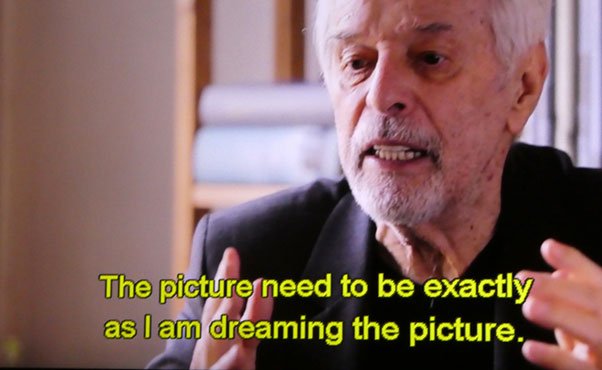
Alejandro is still alive in 2020, and his son, Brontis, who stars in many of his father’s films, has taken on some of the directorial and other creative duties. Alejandro is plotting more assaults on our senses and sensibilities. And with Brontis seemingly a fully-fledged, chip off the old block of creative madness as his dad, plus more of the family involved…the Messianic Jodorowsky Dynasty continues…Full-frontal filmic lobotomies, perhaps?
Fando Y Lis (1968)
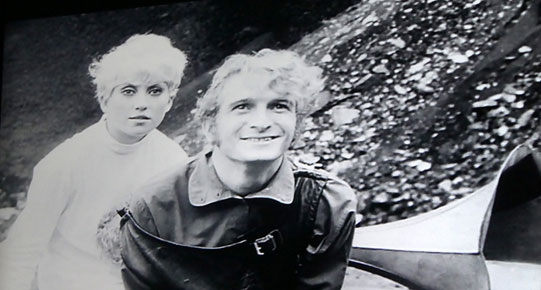
The first feature film from Alejandro Jodorowsky. Stylised in its use of monochrome arts-film techniques. Think: Dali/Bunuel/Fellini/Pasolini. Alejandro didn’t write it, yet it’s strangely autobiographical. Cinematic. Non-linear. Revenge. Hate. Vengeance against mother and father. A surreal search for Oz or Tar? Ultra-violent. S&M basis for relationships. Pre-occupation with pain, torture, rape. We are told that Alejandro’s own father Jaime, raped his mother, Sara, and that was his own conception! Trans-gender. Sublimation of the spirit. Transgression. Sexual politics, or, are they sexual games? Domination, control, Days of Sodom? Desert scenes. Shades of ‘Freaks’ (Powell)?
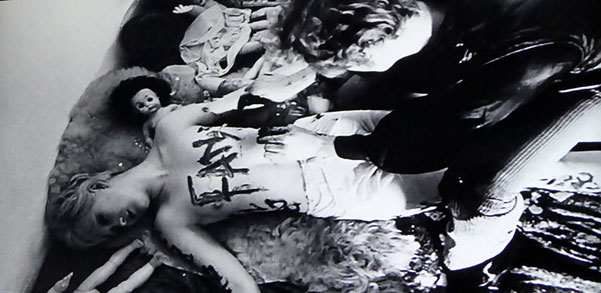
Abhorrent. Immoral, or, amoral? Vaudeville, jazz and slapstick. Anti-religion… Deformity, the paraplegic…parables, fables, transcendence, Zen. Non-realism. Darkness, menace and light… Sacrifice. Atonement. Biblical. The Gospel of the death of the parents. Destruction, rather than Resurrection. Anti-everything? A thing of wonderment. Trailer: https://www.youtube.com/watch?v=E_wpglZcWhw
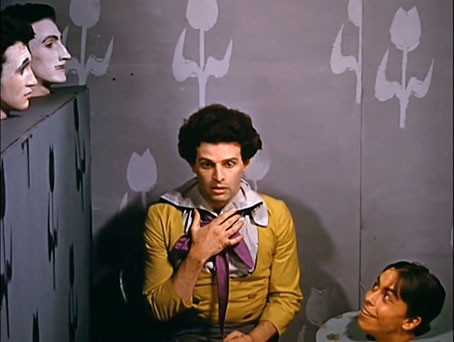
Before Fando Y Lis, Alejandro had made a short melodramatic film in France in 1957, ‘La Cravate/the Severed Heads’. You can view it in its entirety here. A silent film, almost a slice of Chaplin-esque Theatre, with surreal mime sequences and carnival, barrel-organ music. Obviously, Alejandro is one of the stars! https://www.youtube.com/watch?v=H1rhIqZDs2Q
El Topo (1970)
Relatively big budget. Alejandro stars along with his son, seven year-old, Brontis. Filmed in quite lurid colour. More deserts. Abuse, violence, murder, incest, necrophilia. More freaks. Even more of a morality, or anti-morality tale. A Quest. To be the Baddest/Fastest/Gun-fighter…Good versus Evil. Alejandro as the main man. His son passes through various Rites of Passage. Or, is he God or Jesus?
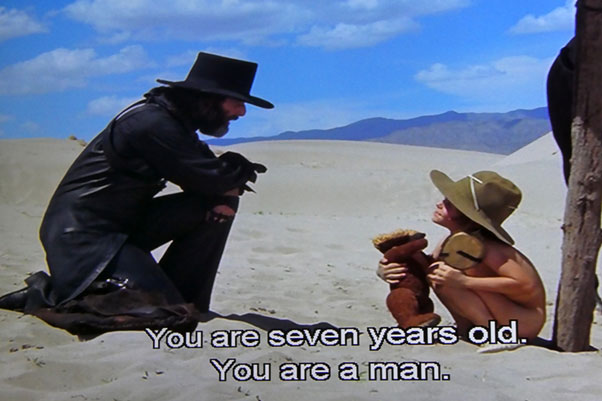
Omnipotent. Over-the-top blood/red paint. Spaghetti Western in the genre of Sergio Leone. Just ‘more so’.
Rights of initiation. Or games of chance? Tarot. I-Ching. The notion of perfection being bad. The women as Brujo witches competing, cajoling…carousing…arousing…mind-control, subjugation… madness and debauchery and the endgame as the ultimate orgy. Sacred Blood. Trailer: https://www.youtube.com/watch?v=widMYyUbvfE
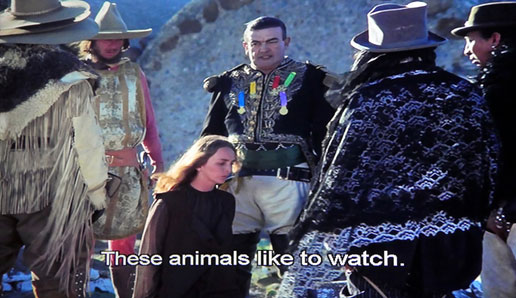
In January 2019 the El Museo del Barrio in New York cancelled a major retrospective dedicated to Alejandro Jodorowsky after reassessing a controversial interview he gave in which he claims to have raped a female co-star, Mara Lorenzio. The act of sexual violence allegedly happened while filming a scene for the surreal Western El Topo. In the 1972 book, ‘El Topo: A Book of the Film’, Jodorowsky said: “I really raped her. And she screamed.”
In his defence in 2019, Alejandro said, “These words: ‘I’ve raped my actress,’ was said fifty years ago by El Topo, a bandit dressed in black leather that nobody knew. They were words, not facts, Surrealist publicity in order to enter the world of cinema from a position of obscurity. I do not condone the act of rape, but exploited the shock value of the statement at the time, following years in the Panic Movement and other iterations of harnessing shock to motivate energetic release.
I acknowledge that this statement is problematic in that it presents fictional violence against a woman as a tool for exposure, and now, fifty years later, I regret that this is being read as truth. My practice is centred on healing and love. I invite further dialogue in the spirit of progress.”
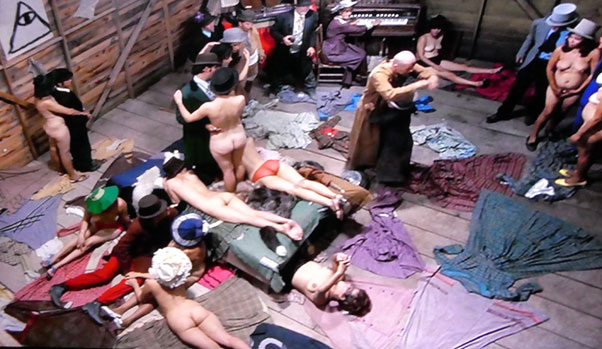
Holy Mountain (1973)
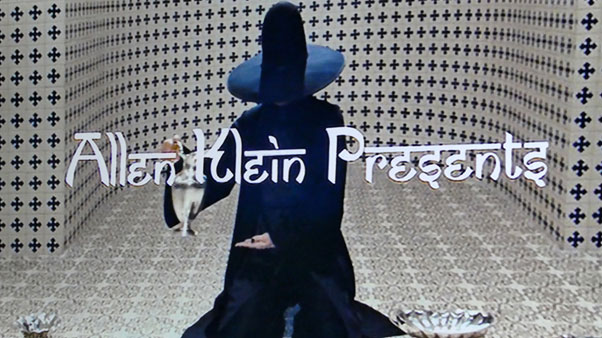
John Lennon and Yoko Ono were two of Jodorowsky’s most vocal international fans after seeing ‘El Topo’. We are told that they personally invested at least £1 million into the production of ‘Holy Mountain’. The finances got messy. But they left the business negotiations in the hands of Beatles’ and Rolling Stones’ manager, Allen Klein. It’s hard to un-pick exactly what happened, but Klein obtained the distribution rights to both these films, fell out with Jodorowsky, suppressed the distribution of the films – literally until 2006 and 2007, since when the films were brilliantly restored with enhanced colour and detail, and again became available on dvd (most recently from ABKCO, headed up by Jody Klein, previously Allen Klein and Co) and at some cinemas and film festivals (Cannes in 1973 and 2006).
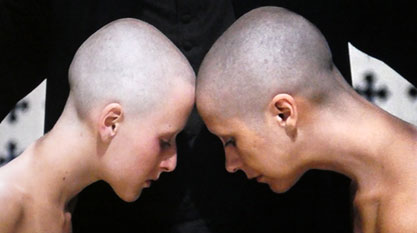
So much for part of the ‘back-story’. But it meant that ‘Holy Mountain’ was released with an opening caption proclaiming that it was produced by said, Allen Klein.
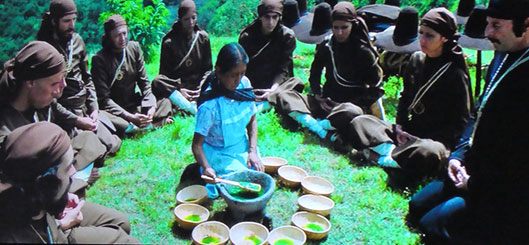
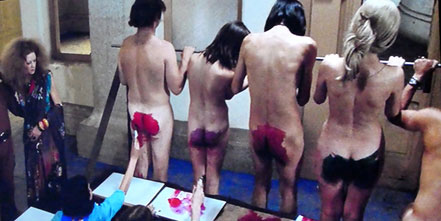
It’s the most accomplished and iconic ‘cult movie’ and Hallucinatory Head Trip ever made. Alejandro is the Alchemist in the film and his personal stamp is all over it. He stars in it, directs it, it’s his script and much of the music is his mix, too. Some memorable World sounds from Alejandro, Don Cherry and Ronald Frangipane. It’s an addled mix of drug-fuelled of images, episodic parables; it’s anti-establishment and religion; filled brim-full with Zen and Tarot logic, illogic and magic; ultra-crammed with sex and violence. It is another set of Ritual Quests. Sort of. Bibical – apostles or acolytes of the planets, Jesus as portrayed by The Thief, Tarot figures come to life (‘our gateway to another dimension’, according to Alejandro) – disciples of the Alchemist – on a journey to the promised immortality offered by summit of the Holy Mountain. Much visual and auditory debauchery, blood (and red paint), dismemberment of people, animals and birds along the way. Nice, it ain’t. But as a film, it is the Ultimate Long Strange Unfathomable Trip! A psychedelic mind-fuck into the worlds of psilocybin mushrooms, LSD, mind-control, Zen and Sufi psycho-magic and Gurdjieff. We even have a scene in The Factory where art is being created by paint-coated bums in homage (or a piss take) to/of Warhol! Parody and homage are frequently close bedfellows in Jodorowsky films. Redemption and enlightenment are only achieved through pain and sacrifice.
And, at the end, have we reached that Enlightenment? Hardly. More likely Dazed and Confused, and with all our senses numbed by the sheer barrage of Scenes-of-Excess. Does
it make sense? Does it need to? Alejandro, the Alchemist, tells us at its conclusion, in yet another Zen-fuelled-moment: “We have reached the top of Holy Mountain. Now, Real Life awaits us.” Perhaps and maybe, but not for some or the many, as they attempt to recover from this Assault and Battery of the Senses. It’s certainly Jodorowsky’s Signature Film. Potentially, his Crown of Surreal Creation. Through Ritual and Magic.
Trailer: https://www.youtube.com/watch?v=zerBaxPbA94
Tusk (1980)
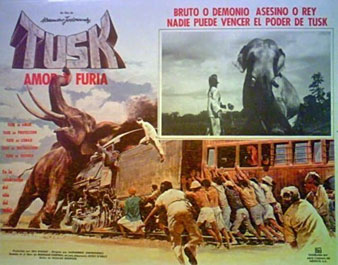
Now impossible to obtain in any format or watch. A family fantasy film about an elephant. Here’s a fairly weird, rough and rocky review of Jodorowsky in this director-for-hire ‘Tusk’ film: https://www.youtube.com/watch?v=yg1AsfULJNk
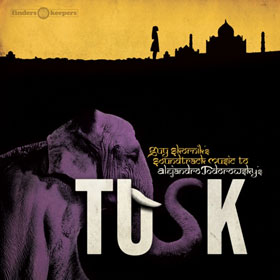
All that can be seen now is a French trailer for the missing family/children’s film, ‘Tusk’: https://www.youtube.com/watch?v=vum6Ymho5TQ&list=PLUNy215K09YrD98xuiGru5doO9IhZNcWb&index=104
There’s also now a fascinating vinyl LP from the label, Finders Keepers, of the soundtrack from French electronic composer, Guy Skornik which features none other than Steve Hillage from Gong! We probably are not missing a lot!
Sante Sangre, ‘Holy Blood’ (1989)

For this film, Alejandro had substantial financial backing and a new collaborator, Claudio Argento (younger brother of Italian Gallo/Horror maestro, Dario). There’s more of a proper story. But it’s still certifiably mad, crazy, bad, nasty, largely illogical, mystical and messy. Many of the recurring Jodorowsky images of Jesus, religion, the Catholic Church, the State, Circus, prostitutes, freaks, dwarves, Down Syndrome people, theatre, mime, initiation rites of passage, and yes, another elephant, appear (and get buried!).
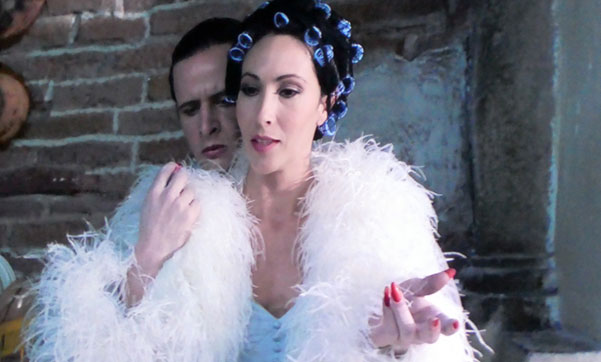
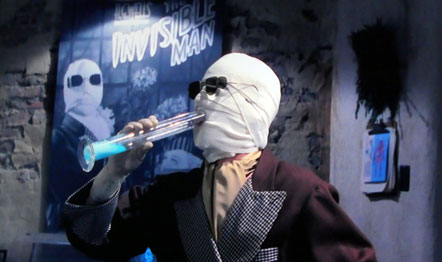
It also involves lots of Jodorowsky children in the cast including Teo, Axel and especially Adan. They are all great. But the film is a confused and confusing muddle. And, of course, there’s plenty of blood and mutilation. There are also some scenes that are left indelibly etched on the viewer’s brain-cell. Circus scenes – virtually mime set-pieces – are among them, and especially the sequences with the ‘hands’ of the Fenix, now an adult man (played by Axel) and the body of his arm-less mother. They are a single entity. It is probably an Oedipal homage to ‘The Hands of Orlac’. As a film it’s almost impossible to categorise or describe. It includes elements of horror, torture and political commentary/intrigue, sado-masochism, fetishism, pathos, but it also includes a number of nods towards other films and film-making – we even have the Invisible Man in a reprise-role!
‘Santa Sangre’ doesn’t seem to have the overall visceral lysergic acid-fuelled ‘hit’ of some of Alejandro’s films, but is still oddball, oblique and filled with more ideas and unique imagery than many directors ever achieve in a lifetime of movie-making. Trailer: https://youtu.be/PQ3x6YgsacY
The Rainbow Thief (1990)
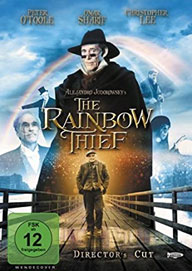
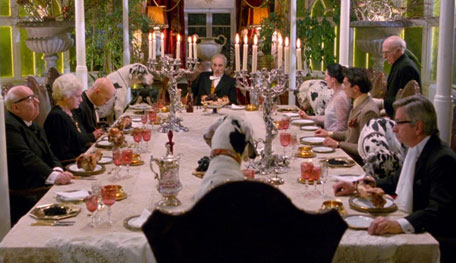
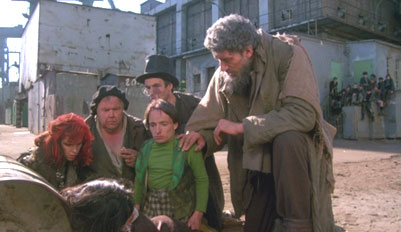
Some odd imagery and set-piece semi-surreal schematics, but not really a Jodorowsky film. Alejandro apparently hated working with the ‘A List ‘stars’ especially Peter O’ Toole. Omar Sharif and Christopher Lee perform tolerably well, respectively over-acting as thief and a millionaire eccentric, at least as compared with the wooden, smiling, leering presence of Peter O’ Toole, who wanders around rather aimlessly looking perpetually ‘stoned’. It was ostensibly a British film, but filmed in Gdansk, which provides some great sets of dark streets and docklands. Just occasionally some genuinely surreal scenes, mostly involving dogs! Overall, a complete and total mess, but lacking in the off-the-wall spontaneity and madness of the Real Jodorowsky. Perhaps that’s because of its stupid, often puerile script, which Jodorowsky was not allowed to change or discard. He’s disowned it, saying that he was working as a film-director ‘for hire’. Here’s a link to the trailer: https://www.youtube.com/watch?v=JyJ37at7_UM
Dune (Director: Frank Pavich, 2013)
The film (sort of) of Frank Herbert’s psychedelic sci-fi epic, ‘Dune’. It never happened. This film is the documentary about the most amazing film that was never made. Fabulous stuff, and a real insight into the mind of the older Alejandro, Brontis, his son and the original creative team behind the Dune-that-never-was. Forget the David Lynch version. An aberration…
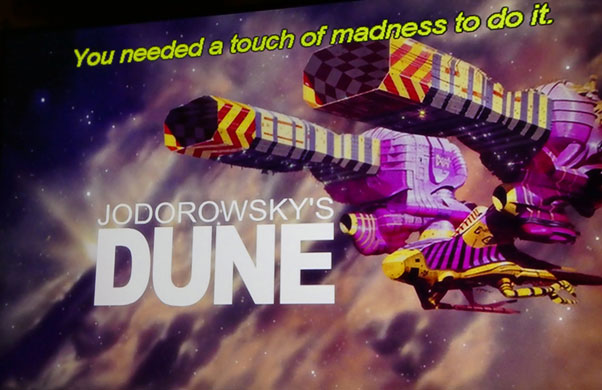
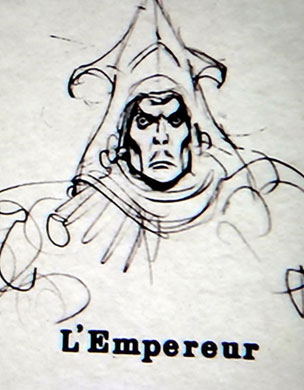
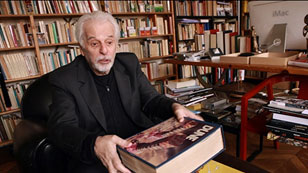
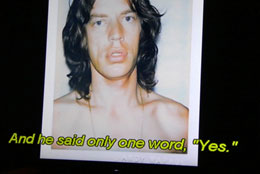
Alejandro spent over three years in the pre-planning, choosing the artists, stars and creative team. His son, Brontis (then aged 12) spent those three years training six hours daily in Zen and martial arts in order to take on the central role of ‘Paul’. Alejandro had the Vision, Belief, Imagination and he was a Magus. Epic, Vast in Scope. The documentary underlines the fact that ‘Dune’ was Life for Alejandro. And Dune was Jodorowsky. In all his megalomaniacal magnificence. It would have been stupendous; visually stunning. It might also have ended up as being over 13 hours in length. Story-boarded by Alejandro, ‘Dark Star’ script-writer, Dan O’Bannon and artist, Moebius – the 1,000 page book of the film was completed and shared with studio after studio, Universal, Metro-Goldwyn-Mayer, Walt Disney… The documentary brings this venture back to life. We meet many of the iconic characters who shared in the almost psychotic ‘creation’ of this Frankenstein-monster of a film which would have starred Salvador Dali as the Evil Emperor (at a possible $100,000 a minute for his ‘acting’); Orson Welles as Baron Harkonnen; Mick Jagger as Feyd-Rautha, and with sets designed by artists, H.R. Giger, Chris Foss, Jean Giraud (Moebius); musicians Pink Floyd and Magma – all committed to the gargantuan project. It ultimately failed because of the sheer scale of its ambition. Or, just maybe because of Alejandro’s own obsessions and madness. Alejandro was not making a film of Frank Herbert’s books – he was imagining a new and radically different ‘Dune’. Here’s what he says about the film – rather disturbing, methinks!
“It’s different. It was my Dune. When you make a picture, you must not respect the novel. It’s like you get married, no? You go with the wife, white, the woman is white. You take the woman, if you respect the woman, you will never have child. You need to open the costume and to… to rape the bride. And then you will have your picture. I was raping Frank Herbert, raping, like this! But with love, with love.”
But it actually spawned and perhaps informed the content of the biggest sci-fi films that followed including, ‘Star Wars’, ‘Blade Runner’, ‘Fifth Element’, ‘Raiders of the Lost Ark’, ‘Flash Gordon’ and ‘Alien’. Here’s the trailer for the Trip: https://www.youtube.com/watch?v=m0cJNR8HEw0
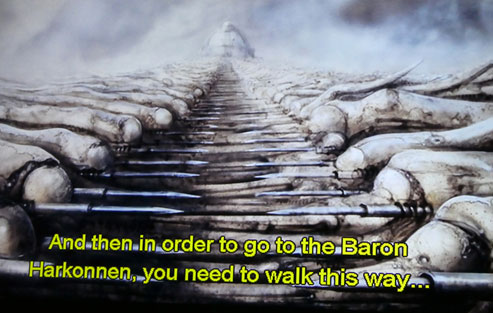
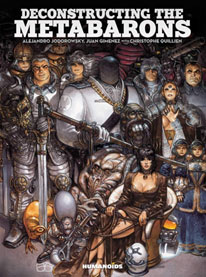
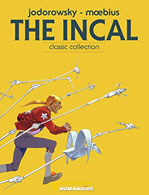
Alejandro and artistic friends including Moebius didn’t waste all their hard work on the Dune story-board. Many of the ideas and images later appeared in the adult comics, ‘The Incal’ and ‘The Metabarons’. And Alejandro still contends that his vision of Dune could still be made as an animation, now that the technology has caught up with his visionary zeal.
The Dance of Reality (2013)
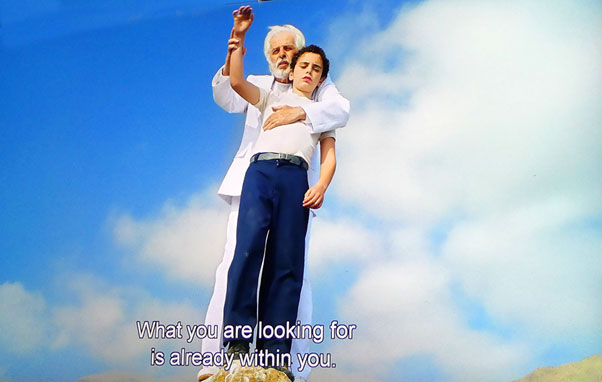
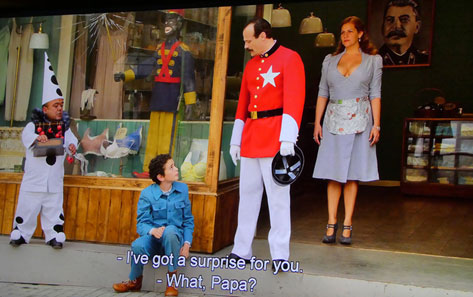
Alejandro had moved back to live in Chile in 2011. With help from crowd-funding on the internet plus the support and involvement of various family members he embarked two ambitious semi-autobiographical films about the life of his parents and himself. This was the first instalment. Obviously it is obtuse, with many surrealist twists, turns and obfuscations. It’s visually and intellectually a real return to form. But, it’s long, and sometimes feels so… But mostly satisfying on all levels. Thought-provoking, endearingly personal, but with more political elements (Stalin and the Chilean president Ibanez del Campo loom over many scenes), boundless leaps and flights of imagination. Chock-full of symbolism and multiple layers of meaning.
And also full of members of Clan Jodorowsky – acting roles as mother, son, grandchild, father, lover, terrorist, Communist, Fascist, horse-trainer, killer, god, Jesus, spiritual guru. On the surface-level, it’s sort of a musical – an opera with a soundtrack to the family history provided by Sara, Alejandro’s mother. Plus, of course, circus scenes, biblical-proportioned deaths, resurrections, political uprisings, armies and carnage. Violent street scenes, war, kindness, retribution and even a parable of the ‘Red Shoes’. There’s also a strong underlying story of the oppressed and tortured Jew in Chile and beyond. It was premiered at the Cannes Film Festival in 2013.
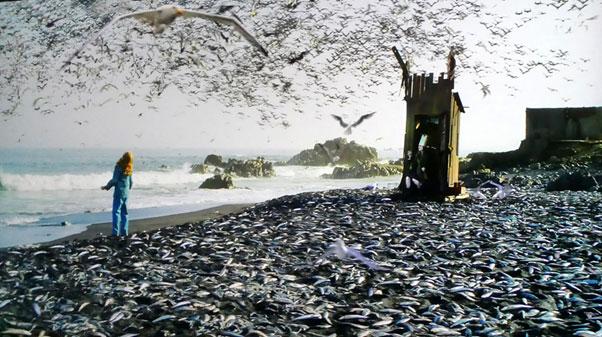
After ‘Dune’, it was 35 years until Alejandro worked again on a film with Michel Seydoux. This was the film. So, what is Reality? Is it bounded by the limits of our Imagination? Who are we? What is Meaning? Is Destruction an act of Creation?
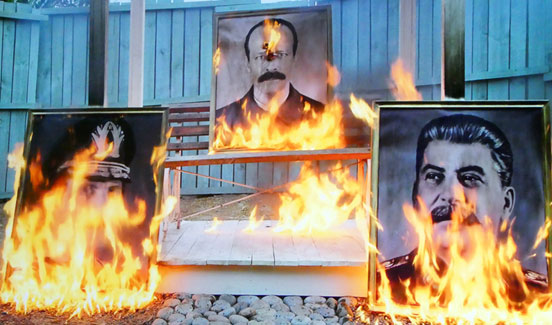
As with all of Alejandro’s films, it’s complex sort of giant onion, with dozens, or hundreds of layers. Episodic, non-linear – both baffling and endearing. Brontis Jodorowsky is particularly effective in the central role as Jaime, Alejandro’s compulsively controlling dad, and Alejandro’s grandson, Jeremías Herskovits, is superb as the young Alejandro.
Long version of the trailer, a featurette, with plenty of Alejandro: https://www.youtube.com/watch?v=VWAKm-9v1-I
Endless Poetry (2016)
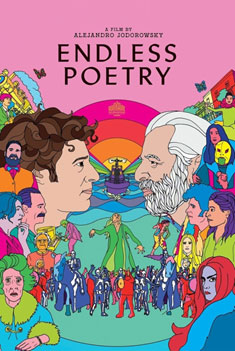
This is essentially the second part of the ‘Dance of Reality’. I think it is the more powerful movie. It’s easier to identify with the characters portrayed. More of Alejandro’s re-imaginings of his own growing up, but this time it covers his adolescence and into his young adulthood. It’s another psycho-magical, surreal experience, but this film offers a bit more cohesion and story-line. Alejandro fights for independence from his father, decides he wants to be a poet, and is offered more opportunities to be part of the artistic community as the family moves to Santiago. His father, Jaime, is still portrayed as a hard-hearted (and once, a severed-headed) tyrant, but the youthful Alejandro is facing his own challenges as he tries to cope with sex, sexuality plus a greater than average number of existential questions about life, death, art and reality! What is abnormal if there is no normal?
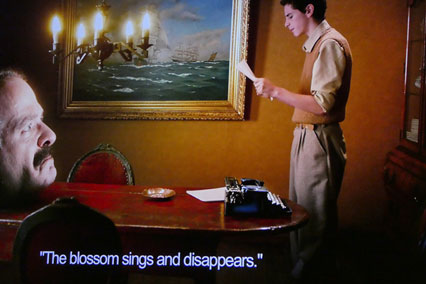
Some of the portrayals and performances by the actors in bringing the bohemian arts community of Santiago to life on screen, are jaw-dropping, phenomenal. No change there – vintage Jodorowsky! Adan Jodorowsy is superb as the teenage Alejandro and is stretching his creative wings with his musical scores.
The scenes and action move with a rapidity that is never easy for the viewer or interloper. Suicides, beatings, circus scenes, sex, Fascists, a very familiar set of images and montage of Jodorowsky characters – but in ‘Endless Poetry’ it seems a bit more controlled, less-contrived, a blended-surrealist reality, if that makes any sense at all? But, don’t worry, there are still plenty of Theatre of the Absurd moments, like the two young poets on their mission to ‘walk the straight line’ – straight through someone’s house and life. Great stuff!
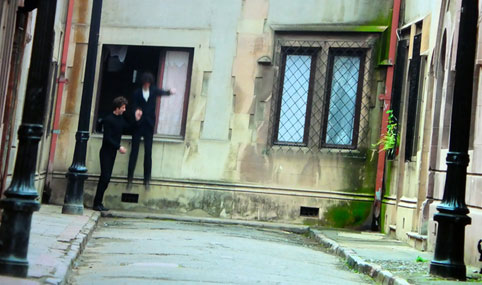
As with ‘Dance of Reality’, this film possesses a trance-like quality, hyper-neo-realism, perhaps? But the characters seem to be more three-dimensional than in many Jodorowsky sensory-assaults. Life really is ‘being lived’. We are all actors, not bystanders or onlookers. Is there one message? Perhaps. All of Life and Death is a Performance! “The brain asks the questions, the heart gives the answers”. (Alejandro Jodorowsky)
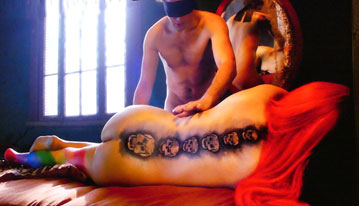
Trailer: https://www.youtube.com/watch?v=4L3_510gM-U
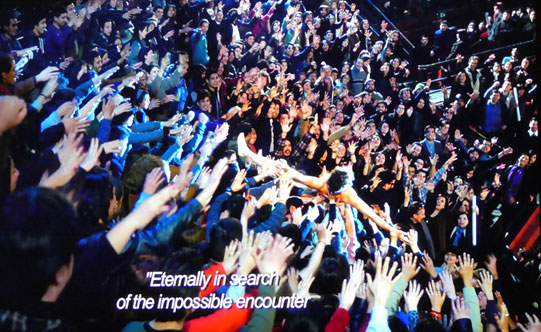
Ritual: Psycho Magic (2015. Directed:Giulia Brazzale Luca Immesi, Italian, from a novel by Alejandro Jodorowski)
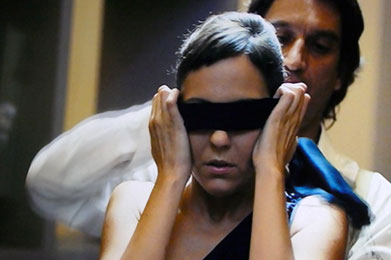
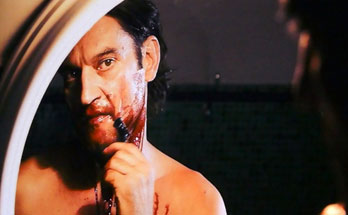
This looks and feels like an up-market piece of erotica transformed into art by the impressive cinematography, acting, and general weirdness. Part Gallo horror, part ‘Psycho’ meets ‘The Shining’. Add a pinch of ‘Rosemary’s Baby’ and a little ‘Repulsion’. Absolutely riveting on the eye. Stunning performances, filled with visual and mental tricks and treats. I watched it in German – and only understood a little – but in many ways ‘half-guessing’ the actual dialogue made it even creepier. Fascinating stuff.
It borrows many motifs from the Jodorowsky repertoire: a wind-up gramophone, bleached out wide-angle scenes, brooding close-ups, obsession, madness, drugs, blood, death, on-looking children, babies and a brooding theme of sexual exploitation and domination. Plus Alejandro in a small but sinister role! And the lines: “…bulging eyes with a twisted mouth…strange fruit.” (Abel Meeropol, 1937).
Trailer: https://www.youtube.com/watch?v=Un9RacmLxVw

PsychoMagic: A Healing Art (2019, Documentary, available soon on dvd, probably)
Here’s a short trailer. More madness and hallucinations! Alejandro proclaims, “I have left my prison and invented Psychomagic.”
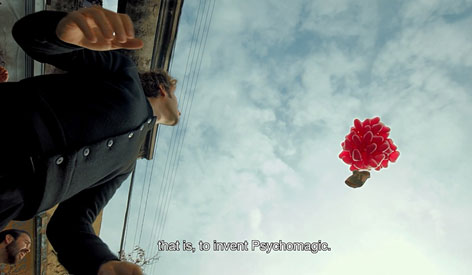
https://www.youtube.com/watch?v=_dma9h0qw6A&list=PLSgcFXy_-eBWd8T7DQp2cC_Nvfl_vGBtJ&index=2
‘Only God Forgives’ is a 2013 crime film written and directed by Nicolas Winding Refn and starring Ryan Gosling, Kristin Scott Thomas and Vithaya Pansringarm. Filmed in Bangkok, Thailand, it is dedicated to Alejandro Jodorowsky, who also features in the documentary film, directed by Refn’s wife, Liv. It is ostensibly a record about the filming of ‘Only God Forgives’. In it Alejandro talks of Nicolas as his ‘spiritual son’.
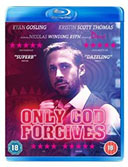
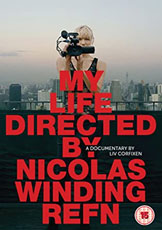
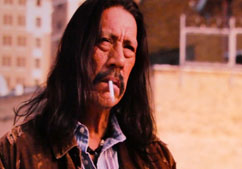
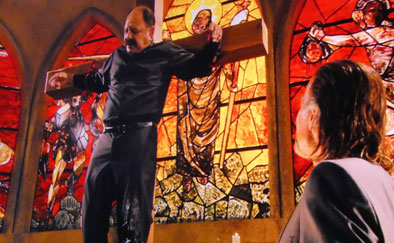
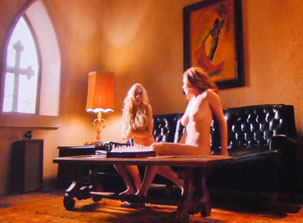
For myself, I can also see many of the themes and filmic elements of Jodorowsky in some of the work of director, Robert Rodriguez. His ultra-violent film ‘Machete’ from 2010 focuses on the corruption of politicians (particularly the Governor, acted by a wonderfully over-the-top, Robert De Niro), police, the Church, drug barons and the retribution of a wild Mexican vigilante character played by Danny Trujo, who is straight out of the blood and sex-filled Jodorowsky filmscapes. Foretells Trump’s America… “The border crossed us…”: https://www.youtube.com/watch?v=XXiuT5Zd8Do
******************************************************************
And, for the future? ‘The Sons of El Topo’ (aka ‘Abel Cain’) is still a live project – but will Alejandro live long enough to complete it? Fingers crossed. Another cliff-hanger, perhaps.
This is well-worth a view, a now slightly dated French documentary-interview online with Alejandro: https://www2.bfi.org.uk/news-opinion/sight-sound-magazine/interviews/alejandro-jodorowsky-pulling-rusty-brains-out-burrows
Finally, here is Alejandro Jodorowsky on The Tarot, especially the Marseille set which he owns a copy of along with 1,500 other sets! What he calls, “An Encyclopaedia of symbols”: https://www.youtube.com/watch?v=IlZq8Nit0Vw
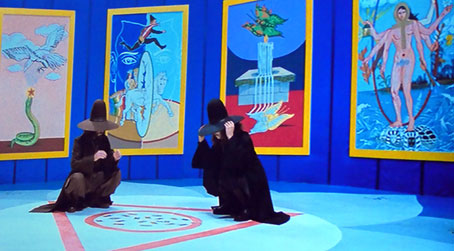
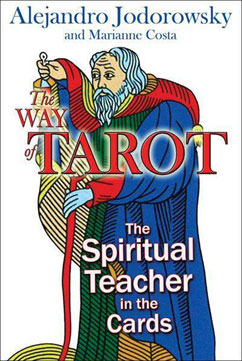
His book on the use of and interpreting the Tarot has many admirers, world-wide. The ‘blurb’ for the book suggests that: “Jodorowsky and Costa take the art of reading the Tarot to a depth never before possible. Using their work with Tarology, a new psychological approach that uses the symbolism and optical language of the Tarot to create a mirror image of the personality, they offer a powerful tool for self-realisation, creativity and healing.”

Great to see this – he’s a great filmmaker. I recently watched ‘The Dance of Reality’ and ‘Endless Poetry’ currently showing on MUBI. I’ve seen earlier Jodorowsky films but hadn’t seen these two. Both worth watching.as you say.
Comment by Simon Collings on 6 December, 2020 at 4:05 pm